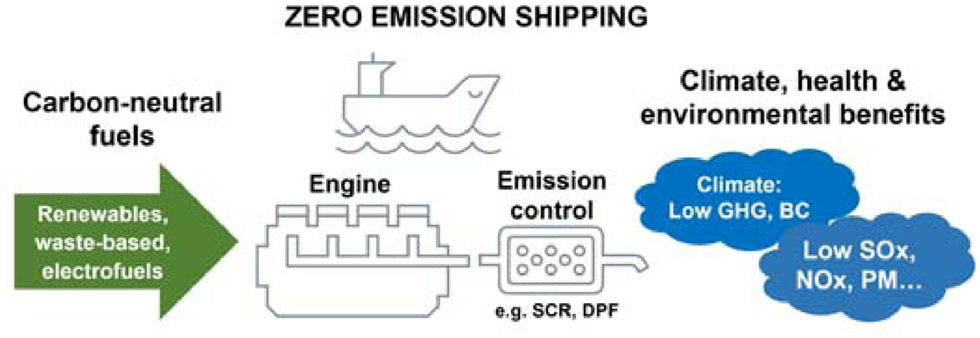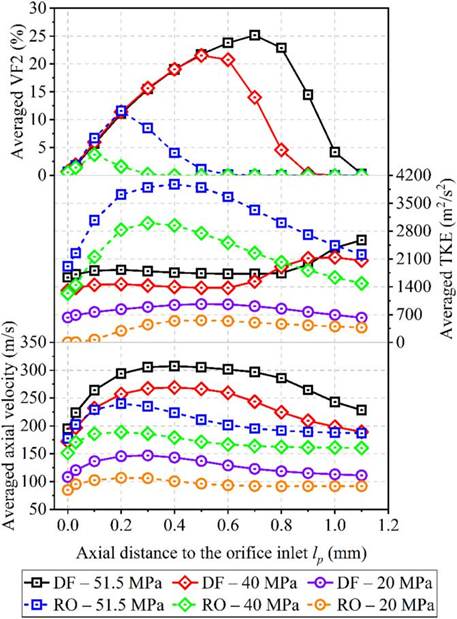1. Introduction
Since the invention of the diesel engine by Rudolf Diesel in 1892, the diesel engine has played an important role in modern society. Its innovation and development have an important position in the industrial field. The reason for this is mainly due to the many advantages of diesel engines. For example, diesel engines generally operate with higher thermal efficiency than gasoline engines, which means that diesel engines can produce more power with the same fuel consumption, making them more energy efficient. At the same time, the diesel engine can provide higher torque to facilitate the work of heavy machinery. Secondly, most diesel engines have a longer life and are more reliable, which also leads to more important vehicles choosing to use diesel engines. Then, diesel engines can choose from a variety of fuels, and the development of biofuels has reduced the dependence of diesel engines on fossil fuels, making them more adaptable to the current global energy crisis. This paper will study the progress of diesel engine technology, fuel substitution, wide application in multiple fields and the possibility of performance optimization based on the current rapid development of diesel engine technology and the active call for energy conservation and emission reduction in many countries.
2. Technological Innovation and Progress of Diesel Engines
With the great progress of modern science and technology, the technological innovation of diesel engines has also been promoted, mainly for the purpose of improving combustion efficiency and reducing the impact of emissions on the environment, and constantly updating technology to meet the needs of environmental protection and sustainable development. Among them, turbocharging technology and common rail fuel injection technology are representatives of today’s technological innovation.
2.1. Turbocharging Technology
Turbocharging technology is rooted in the principles of thermodynamics and fluid mechanics. It can be categorized into four main types: exhaust gas supercharging, mechanical supercharging, twin turbocharging, and airwave supercharging. This technology harnesses the kinetic energy generated by the engine’s exhaust gas expulsion to drive the turbocharger rotor, which, in turn, boosts the air flow pressure and density in the intake manifold. This process delivers a greater volume of fresh air for the engine’s combustion, thereby enhancing fuel combustion efficiency and increasing power output. Notably, turbo lag is more pronounced in gasoline engines when compared to diesel engines. This discrepancy can be attributed to several factors, such as the lighter weight of gasoline engines, smaller flywheels, and a wider mass flow range. To maintain optimal performance at lower engine speeds, maintaining a consistent boost level throughout its operational range becomes essential [1]. Even in its most advanced iterations, turbocharging technology exhibits room for enhancement when functioning at lower engine speeds. This effect is notably more pronounced in petrol engines, primarily due to the lower mass flow rate of exhaust gases [2]. As a result, turbocharging is widely used in engines that require high power, and in the automotive industry, turbocharging technology continues to develop and has been leading the way, such as Formula 1. In the field of ships, turbodiesel engines have always been the leader, which improves combustion efficiency, increases compression ratio, enhances low-speed torque output and reduces exhaust emissions advantages make most ships choose turbodiesel engines, whether passenger ships, cargo ships or warships. In terms of emission reduction and performance enhancement, the automotive and aviation industries have undergone substantial developments during the last few decades. According to some reports, electrification is the automobile industry’s main goal, particularly over short distances; as a result, automakers equip their vehicles with entirely electric or hybrid engines. Achieving such a goal is challenging for the aviation sector, where flight endurance is crucial, particularly for tiny aircraft. This justifies the continued widespread usage of turbocharged internal combustion and tiny turbine engines in such aircraft [3].
At the same time, turbocharging technology has a huge impact on the performance and efficiency of diesel engines; first of all, turbocharging technology can increase the intake of the engine and improve the power output so that the engine in high-speed, heavy load and climbing and other load conditions show better power performance. Secondly, turbocharging technology enables the engine to achieve higher intake pressure and airflow, which is conducive to fuel atomization and combustion, improves combustion efficiency, and reduces fuel consumption. Turbocharging technology can improve low-speed torque output, improve engine starting and acceleration performance, reduce turbo lag, and improve engine driving comfort and driveability. Finally, turbocharging technology improves the combustion efficiency of the engine, reduces the emission of unburned fuel and particulate matter, and has a better control effect on environmental pollution.
2.2. Common Rail Fuel Injection System
Common rail fuel injection technology is an engineering method that employs high-pressure liquid fuel to facilitate engine combustion. This technology relies on a common rail, also referred to as a fuel supply rail, to deliver fuel. It elevates fuel pressure significantly using a high-pressure pump and subsequently administers fuel into the engine’s combustion chamber in accordance with predetermined parameters, including timing, pressure, and injection pattern, through an injector. The fundamental operating principle involves raising fuel pressure within the common rail pipe through the high-pressure pump. This process is monitored by a high-pressure sensor, while the Electronic Control Unit (ECU) regulates the electromagnetic flow of the common rail pump and the aperture of the regulating valve to manage the injection sequence and quantity. Ultimately, the fuel is introduced into the combustion chamber via the injector.
Common rail fuel injection systems are still suitable for widespread use and are the mainstream of diesel injection systems in the 21st century. In addition to reducing lubricant consumption, optimizing pressurization systems and developing exhaust after-treatment systems, it is important to further improve the combustion process while maintaining the excellent fuel economy of direct injection diesel engines while meeting increasingly stringent emission regulations [4]. For example, pre-injection is used to inject a portion of fuel into the cylinder before the main injection to reduce the delay of the main injection ignition and reduce the possibility of misfire. On the other hand, different fuels can be tried, such as engines that use Niger seed oil biodiesel mixes are used as fuel. According to the study’s findings, compared to regular diesel fuel, the biodiesel mixes had better vibrational characteristics [5].
3. Application and Performance of Alternative Fuels in Diesel Engine
3.1. Biodiesel
Biodiesel is an alternative fuel produced by esterification reactions from vegetable or animal fats. Its production process includes pretreatment, esterification reaction, fuel treatment and other steps. In terms of characteristics, biodiesel has low sulfur content, high lubricity and a high freezing point, while its oxygen content is high, and the harmful gas emissions produced during combustion are less [6]. For instance, Zhang et al. discovered that compared to diesel, the CO and soot emissions from biodiesel were reduced by 30% and 70%, respectively [7]. At the same time, biodiesel, with its lower volatility and high ignition characteristics, can effectively improve engine combustion efficiency and effectively reduce fuel consumption. Because of its high oxygen content, it can effectively reduce exhaust emissions.
3.2. Synthetic diesel diesel
Synthetic diesel is an alternative fuel obtained by chemical reactions such as hydrocracking and hydro deposition of non-biomass raw materials such as coal, oil, shale and natural gas. Its production process mainly includes coal gasification, synthesis gas preparation, synthetic diesel processing and other steps; because of its high calorific value and low volatility, it can bring greater output power to the engine while reducing fuel consumption, and because its raw materials are non-biomass raw materials, its combustion process emits relatively little carbon dioxide, which can reduce greenhouse gas emissions. It is very in line with the current goal of multinational efforts to achieve carbon neutrality. Meanwhile, the use of various energy sources for internal combustion engines or fuel cells, such as hydrogen, ammonia, methanol, methane, and synthetic diesel, is the topic of discussion [8].
3.3. Water emulsified diesel
Water-emulsified diesel is a fuel mixture consisting of diesel fuel and water, with the water droplets, dispersed into very fine particles through the use of an emulsifying agent or co-emulsifying agent. This emulsified diesel, containing water, enhances the dispersion of oil droplets during the compression combustion process, ensuring more extensive contact with oxygen and consequently, promoting more efficient combustion. As a result, the primary function of water-emulsified diesel in diesel engines is the notable improvement of combustion efficiency. Additionally, the presence of water has a significant cooling effect, effectively lowering the combustion temperature and subsequently reducing the formation and release of nitrogen oxides, which holds considerable importance. For example, nano-emulsified diesel is effective in this regard. Due to their emissions of smoke, nitrogen oxides, particulate matter, sulphur oxides, carbon dioxide, and carbon monoxide, diesel engines are a significant source of air pollution in cities and metropolitan areas. Nanoemulsion fuel can drastically reduce nitric oxide emissions. Lower exhaust gas temperatures produced by nanoemulsion are better for combustion [9].
In addition, water-emulsified diesel can reduce particulate matter emissions due to the inhibition of particulate matter generation and emission by water.
In general, biodiesel, synthetic diesel and water emulsified diesel all have a place in the current technological innovation of diesel fuel, which also needs to be selected according to different environmental conditions and different purposes. However, it is not disputed that all three alternative fuels will make an important contribution to sustainable development.
4. Application of diesel engines in different fields
4.1. Vessels
In a broad sense, marine diesel engines can be divided into two-stroke diesel engines and four-stroke diesel engines through the classification of work cycles and can be divided into supercharged diesel engines and non-supercharged diesel engines by air intake classification, which can also be divided into low-speed, medium-speed and high-speed diesel engines by speed. Most of these ships use supercharged diesel engines, because their pre-compression of air can effectively increase the average effective pressure and thus improve combustion efficiency, while non-supercharged diesel engines are mostly used in small boats or dinghies. In terms of ship interior, the main engine usually uses a two-stroke low-speed diesel engine, while the four-stroke high-speed diesel engine is usually used as a generator. In the marine sector, diesel engines undoubtedly have many advantages. Their higher power can provide sufficient power to propel larger ships. At the same time, diesel engines have higher combustion efficiency and lower consumption rates, which can reduce fuel consumption to save costs and reduce emissions. With a focus on both greenhouse gas emissions and other types of pollution, the International marine Organization (IMO) has established a number of legislative measures over time to reduce polluting emissions from the marine industry [10]. At present, the development of marine diesel engines in carbon neutrality and air pollution reduction is crucial. Energy management and cost reduction across a variety of economic sectors could significantly improve with the implementation of energy efficiency technologies and smart control tactics [11]. 46% of total CO2 emissions are attributable to the transportation and industry sectors, with the shipbuilding sector accounting for 11% of the latter [12]. As shown in Figure 1, it can be seen that the ship’s diesel engine is constantly improving in the direction of more efficient and environmentally friendly.

Figure 1. For (almost) zero-emission shipping, a combination of carbon-neutral fuels and emission-reduction technology is required [13]
4.2. Commercial Vehicles
In the commercial vehicle sector, diesel engines are mainly used in large trucks, trailers and buses. Diesel engines can greatly exert the advantages of high torque, strong adaptability, low fuel consumption rate and high combustion efficiency in commercial vehicles. When diesel engines work on commercial vehicles, they need to overcome the requirements of high load and efficiency. For example, turbocharged diesel engines are very suitable for commercial vehicles that require high power, and diesel engines with more cylinders and higher compression ratios can effectively solve the problem of excessive load. At the same time, in the face of the current strong rise of new energy vehicles, the hybrid can also be used as a direction for diesel vehicles.The benefits of an improved internal combustion engine (ICE) and an electric drive mode are combined in a hybrid electric vehicle (HEV). With the help of the electric motor, the ICE in a HEV can run at a generally favorable temperature. [14]. Therefore, diesel engines still play an important role in the application of commercial vehicles.
4.3. Passenger Vehicles
Within the realm of passenger vehicles, a substantial share of the market is held by gasoline engines and diesel engines. In China, the majority of passenger cars opt for gasoline engines, primarily due to their quieter operation, which enhances overall comfort. However, certain passenger cars, particularly in the SUV segment, opt for diesel engines to benefit from their higher torque and power output. Conversely, in Europe, there is a significant preference for diesel engines. The phenomenon known as “European dieselization” refers to the sustained increase in the adoption of diesel-powered vehicles in the passenger car fleet. This trend can be attributed to the initial European Union (EU) strategy aimed at reducing carbon dioxide (CO2) emissions from passenger cars [15]. It can be seen that diesel engines have an advantage in their reduced greenhouse gas emissions. The sustained increase in the diesel share in new passenger car registrations that took place from the mid-1990s onward, also known as the European diesel car boom, is generally attributed to the voluntary agreements signed by the European Commission (EC) and the automotive industry [16]. At present, diesel engines are still active in the international market, and with technological innovation, a brighter future can be foreseen.
4.4. Aviation
Since World War II, diesel engines have intermittently found application in the aviation sector, notably in the realm of Unmanned Aerial Vehicles (UAVs), owing to their exceptional reliability and fuel-efficiency attributes, which translate into superior performance. In the current era characterized by economic globalization, the aviation industry is experiencing significant growth. This context presents an opportunity for diesel engines to establish a presence within the aviation domain. However, it is worth noting that the aviation sector has undergone rapid transformation, driven by substantial demand in both passenger and cargo transportation. This transformation has led to a notable increase in automotive diesel prices by twenty-six percent and a more substantial over one hundred percent surge in jet fuel prices between 2016 and 2020 [17]. These developments underscore the evolving role of diesel engines within the aviation industry.
5. Thermal efficiency and performance optimization of diesel engines
The improvement of thermal efficiency and engine performance has always been the top priority of diesel engine development, and this article will briefly analyze the optimization of new combustion strategies and injection patterns.
5.1. New combustion strategies
Over the course of more than a century of diesel engine development, various innovations have been introduced to enhance its combustion processes. Initially, the traditional injection direct combustion mode involved fuel being directly injected into the cylinder via the injector. While this method could result in increased power output, it also led to elevated emissions of nitrogen oxides and particulate matter, often accompanied by incomplete combustion. A more advanced approach is compression ignition combustion, often referred to as HCCI (Homogeneous Charge Compression Ignition). In HCCI, fuel is introduced into the cylinder at low pressure after the air has been compressed to the ignition temperature. This combustion mode offers improved controllability, heightened combustion efficiency, reduced fuel consumption, and, most notably, a significant decrease in emissions of nitrogen oxides and particulate matter. Subsequently, a further advancement emerged in the form of low-temperature premixed combustion, known as RCCI (Reactivity-Controlled Compression Ignition). The RCCI engine concept has been recognized as a promising method for achieving high efficiency and clean combustion. It has been patented and demonstrated as an effective approach [18]. RCCI diesel engines are distinguished by their ability to substantially reduce NOx and particulate matter emissions while maintaining thermal efficiency at a consistent level.
5.2. New combustion strategies
Fuel injection is also one of the focuses of diesel engine technology, and diesel engine injection will be further optimized with technological progress. For example, more sophisticated microcontrollers are used to precisely control the amount and time of injection. At the same time, the use of more accurate injectors is also very helpful to combustion efficiency, and the atomization effect of the injectors directly affects the combustion quality and efficiency. The ensuing fuel atomization is mostly determined by the flow parameters inside the injector nozzle, which are sensitive to fuel qualities [19]. By constantly experimenting and optimizing the nozzle diameter and shape, the uniformity of the spray can be further improved to obtain better injection quality. In addition, controlling the amount of injection and the injection time of the pre-injection is very helpful to control the concentration of the mixture and help control the combustion efficiency (Figure 2).

Figure 2. Volume fraction of cavitation vapors (VF2), TKE, and change in axial velocity (CAV) averaged over the nozzle orifice’s cross-section along the orifice axis [20]
6. Conclusion
This paper mainly summarizes the technological innovation and application of diesel engines in many aspects and fields in the era of the global energy crisis and explosive development of science and technology, including turbocharging technology, common rail fuel injection technology, the application of three alternative fuels, the application of diesel engines in multiple transportation fields and how to improve the thermal efficiency of diesel engines. It is undeniable that diesel engines have many advantages but, at the same time, have a negative impact on the environment. In the near future, more advanced fuel alternatives will appear, and diesel engines with higher combustion efficiency and lighter exhaust emissions will appear. This research will be followed by the design and manufacture of new engines that combine new energy and conventional diesel engines.



